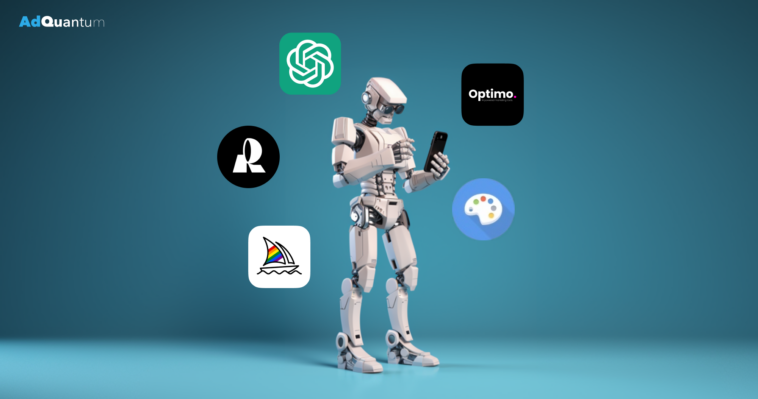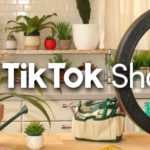In a world buzzing with talk about artificial intelligence and machine learning, it’s surprising how many app marketers are missing out on the true potential of AI tools. With the wealth of information at their fingertips, it’s easy to feel overwhelmed and unsure about where to start.
Brought to you by user acquisition and creative experts from AdQuantum, a performance marketing agency, this article serves as your guiding light. It illuminates the path to effectively exploit AI tools for UA. Get ready to unlock the transformative capabilities of AI.
1. Developing fresh creative concepts
On our team, we boast 10 creative producers who occasionally collaborate on singular projects. While they work autonomously, it’s intriguing to observe the nuances of human cognition. Despite starting with varied concepts, there often emerges a point where their ideas begin to overlap, resembling strands of a thick braid. Here, the uniqueness of AI offers a fresh perspective. Think of it as an independent creative producer, untouched by the team’s influences. It crafts something distinct, serving as an inspiration source for our human creators.
What it looks like in practice: we prompted ChatGPT to design a captivating fitness program ad. Not only did it generate the visual concept, but it also detailed its various visual components such as what the person in the ad and the environment look like, how the ad starts and ends, and what’s its length.
Furthermore, ChatGPT can now generate images, not just mere stock photos, but editable templates. This advancement is attributed to the integration of the Canva plugin for GPT-4.
You can also utilize ChatGPT to generate prompts for other AI tools like Midjourney, optimizing the creative structure for platforms such as Midjourney or Stable Diffusion. Precision is key! Ensure you provide ChatGPT with comprehensive details about the product you’re promoting.
2. Getting a better understanding of a product’s audience and their needs
Text generation tools aren’t limited to producing text. They can also be employed to identify target audiences and understand their needs for different products. This is particularly helpful when you’re just starting to work with an app or game and getting to know it. However, we still recommend actively using the app and exploring it through conventional methods in addition to leveraging AI tools.
3. Writing copy
AI tools are instrumental in text generation tasks — be it ad copy for ad platforms, text for visuals, AI prompts for creatives, task descriptions for designers, voice-over scripts, or influencer briefs. We predominantly use ChatGPT and Optimo. To tackle these tasks, you can rely on two primary tools: ChatGPT and Optimo. Let’s take a closer look at each of them.
ChatGPT excels in creative tasks, such as writing influencer scripts, refining voice-over text, and generating variations of copy for creatives.
Regarding UA tasks, ChatGPT may require additional fine-tuning or more detailed and specific prompts. For instance, when we ask questions about audience targeting or campaign optimization, it tends to provide somewhat abstract responses that might not always be directly applicable in practice.
However, ChatGPT has an interesting feature – it can generate great prompts for other AI tools. So, we just shoot it a request saying, “He gives me a prompt for Midjourney on visuals for a fitness app where a woman does simple leg exercises near the wall”. And it actually does a pretty decent job of providing me with one.
Optimo goes in handy specifically for crafting text blocks in ad campaigns. The tool itself is designed for marketers. Here’s how it works: First, we turn to ChatGPT and ask it to prepare a request for another AI tool to generate variations of ad copy. ChatGPT provides a prompt, and then we switch to Optimo, which generates finely-tailored text specifically designed for advertising platforms.
Optimo provides text blocks such as ‘primary text,’ ‘description,’ and ‘headline.’ It prepares five variations for each text block, giving us the option to choose one or use them all for testing purposes. The generated headlines are usually quite effective, and we actively exploit them. However, the text variations for the ‘primary text’ and ‘description’ blocks are still pretty basic. It’s possible that the algorithms may require further fine-tuning or that you will need to formulate more precise prompts and provide more detailed descriptions of the product you work with.
4. Crafting design references for ad creatives
Let’s say you have an idea for a creative concept. You may need to represent an abstract concept and convey it to a designer, but you’re not quite sure how to approach this and transfer your idea correctly.
Here’s where we turn to Midjourney to gather the references you can present to a designer to get exactly what you need. For example, if you need to depict an abstract concept like “woman’s confidence,” you can visit Midjourney, obtain various images, and simply send them over to a designer – voila!
However, the issue with Midjourney is that the generated images have a distinct Midjourney style. You can easily tell that they were produced by Midjourney, regardless of what it generates. Therefore, when it comes to producing creatives with AI, we use other tools.
5. Producing static creatives
When we require a fast and high-volume production of static creatives on a specific theme, our primary solution is AI generation. Alongside categories such as 2D, 3D, illustration, UGC, and playable ads, we now have a dedicated task for AI-generated creatives. For this, we make use of Stable Diffusion as our go-to tool.
It generates high-quality images based on text prompts, refines rough sketches, and puts its own unique touch on reference images. And it’s completely free of charge. Plus, the open-source code allows users to install Stable Diffusion on their own computers and harness the power of their own computational resources.
Stable Diffusion excels among other visual AI tools as unlike traditional diffusion models, it utilizes a hidden diffusion model, which forms the foundation for most modern image-generating tools. Traditional AI models like DALL-E 2 and Midjourney work on individual pixels. In contrast, Stable Diffusion saves time and computer power by working with compressed versions of images instead of pixels. The mechanism was trained on a database where each image was associated with a description.
6. Obtaining creative variations
AI tools also enable us to create variations of creatives quickly and cost-effectively. You upload the completed creative and request its variations. AI doesn’t make drastic alterations but rather makes subtle changes. This is precisely what we need, as each of these variations is treated as a distinct creative by the ad platform.
7. Creating avatars for fan pages
At Racraft AI, we create avatars for fan pages. This tool generates vector images, and it does a pretty good job, even better than Midjourney, and the best part is that it’s free. You can generate the same image in various styles.
Summing up
AI tools undoubtedly accelerate processes. In some instances, you’re no longer just a creator but someone who controls the creation. The proficiency once held by a team of 10 can now be matched or even surpassed with AI assistance, ensuring a continual flow of creativity. Invest in integrating AI into your workflow, and the results will be rewarding. And remember, regularly refine your neural networks to achieve enhanced outcomes.







Comments
Loading…